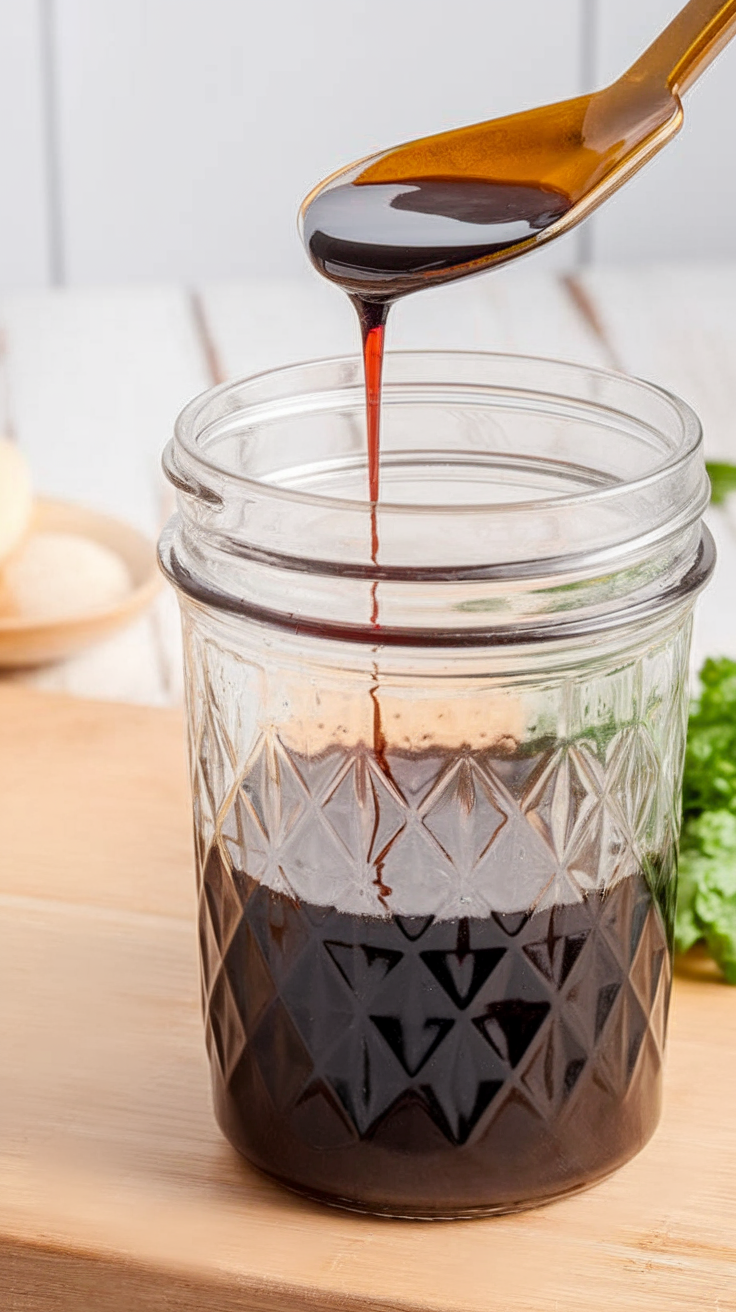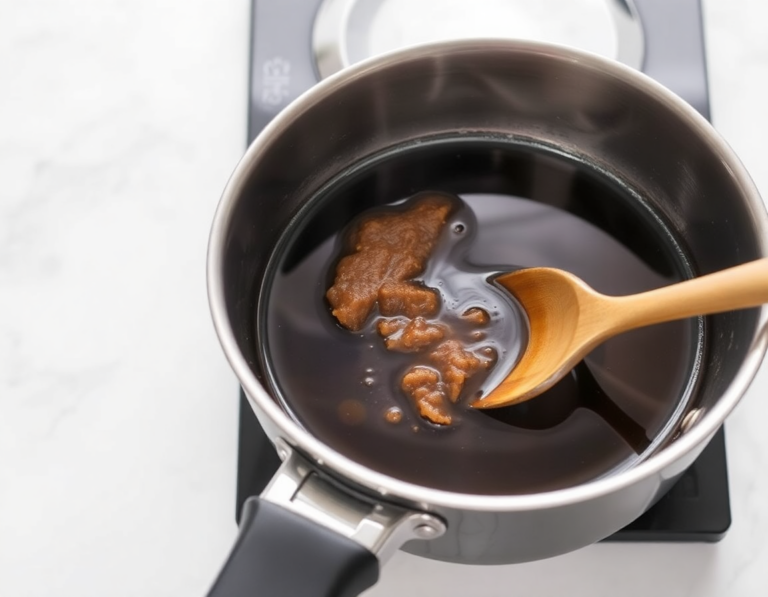Ah, balsamic glaze—a syrupy, tangy elixir that can transform even the most mundane dish into something extraordinary. Picture this: a drizzle over fresh strawberries, a splash on a crispy roasted veggie, or, why not, a swirl across a slice of pizza? The magic of balsamic glaze is its ability to make everything feel a tad bit fancier, like adding a bow tie to a plain white shirt.
Steps
- Combine balsamic vinegar and brown sugar in a saucepan and heat over medium, stirring until the sugar completely dissolves.
- Increase the heat to bring the mixture to a boil, then lower it and allow the glaze to simmer until it reduces by half and can coat the back of a spoon, approximately 20 minutes.
- After cooling, transfer the glaze into a jar with a lid, seal tightly, and store it in the refrigerator.
Ingredients
- 2 cups of balsamic vinegar
- ½ cup of brown sugar
Nutritional Values
Calories: 730 | Total Fat: 0g | Sodium: 150mg | Total Carbohydrates: 180g | Total Sugars: 180g | Protein: 0g | Vitamin C: 0mg | Calcium: 240mg | Iron: 10mg | Potassium: 530mg
FAQ
- What is balsamic glaze typically used for?
- Balsamic glaze is a versatile condiment that can enhance the flavor and presentation of a variety of dishes. It’s often drizzled over fish, poultry, vegetables, pasta, salads, and even fruit, adding a sweet and tangy flavor.
- Can I use different types of vinegar or sweeteners in this recipe?
- Yes, you can customize the balsamic glaze by using flavored balsamic vinegars like raspberry. Additionally, you can substitute brown sugar with molasses, honey, maple syrup, or agave nectar based on your preference.
- How should I store balsamic glaze once it’s made?
- After preparing the glaze, let it cool and pour it into a lidded jar. Seal it tightly and store it in the refrigerator to preserve its flavor and texture.
- How can I tell when the glaze is ready during cooking?
- The glaze is ready when it has reduced by half and thickened enough to coat the back of a spoon. This should take about 20 minutes of simmering on low heat.
- Are there any tips for reducing the strong vinegar smell while cooking?
- The cooking process can produce a strong vinegar aroma. To mitigate this, ensure proper ventilation by turning on your oven hood and opening windows to allow fresh air to circulate.
Tips
- Use as a Drizzle: The balsamic glaze has a strong flavor, so it’s best used sparingly as a drizzle rather than a heavy sauce. This will enhance your dishes without overpowering them.
- Experiment with Flavored Vinegars: Try using raspberry or other flavored balsamic vinegars for a unique twist that suits your taste preferences.
- Alternate Sweeteners: If you prefer a different kind of sweetness, substitute the brown sugar with molasses, honey, maple syrup, or agave nectar.
- Be Mindful of Ventilation: The simmering process can create a strong vinegar scent in your kitchen, so it’s a good idea to ensure proper ventilation by using an oven hood or opening a window.
Equipment
- Saucepan – A medium-sized saucepan is needed for mixing and simmering the ingredients.
- Lidded Jar – Useful for storing the finished glaze in the refrigerator.
- Squeeze Bottle – Optional, but helpful for easy drizzling and storage of the glaze.


